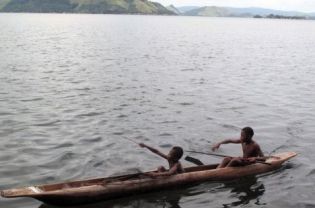At least five lakes and 65 rivers across the country were contaminated as a result of human activity last year, the country’s leading environmental group says.
Mukri Friatna, head of advocacy for the Indonesian Forum for the Environment (Walhi), said on Monday that the figure for rivers found to be polluted was up from 53 in 2009.
“These are all newly polluted rivers because we didn’t count those that were already heavily polluted, such as the Ciliwung River [in Jakarta],” he said.
The lakes polluted last year include Sentani in Papua, which has been contaminated with domestic waste, and Unhas in South Sulawesi, which is polluted with heavy metals.
The other lakes are Situ Rawa Badung in West Java (contaminated with mercury), Sembuluh in Central Kalimantan (a dumping ground for crude palm oil waste), and Penantian in South Sumatra (polluted by a nearby coal-fired power plant).
Mukri said the contamination problem has been exacerbated by the proliferation of industrial waste.
“Industries tend to dump their liquid waste during the rainy season, assuming that the rain will help wash it out to sea,” he said. “However, these days we see them dumping their waste more indiscriminately, even outside the rainy season. We found cases of this in Kalimantan. The government should be serious about assessing companies’ environmental impact.”
He added the government should also update its liquid waste disposal standards because they were no longer applicable to current conditions.
Mukri said any given stretch of the Ciliwung, for example, hosts fewer factories dumping their waste directly into the water than a similar stretch of the Citarum River, thus requiring a different policy.
The Citarum passes through several heavy-polluting industrial estates in Bekasi and has been called the world’s dirtiest river by the Asian Development Bank.
“The more factories are concentrated in an area, the more waste is dumped and hence the higher the need to boost the waste disposal standards,” Mukri said. “This is the kind of thing that the Environment Ministry needs to address.”
Sigit Hermono, the assistant deputy for river and lake degradation at the Environment Ministry, acknowledged Walhi’s findings but said he had not read the report. “I’m not directly responsible for those rivers, but I’m sure the regional [environmental] offices will be able to provide similar data,” he said.
He added the ministry had prioritized 13 rivers in Java for restoration, including the Ciliwung, and also said it would look into sources of the contamination before evaluating waste disposal standards. “You need to make sure what kinds of waste are out there.”


